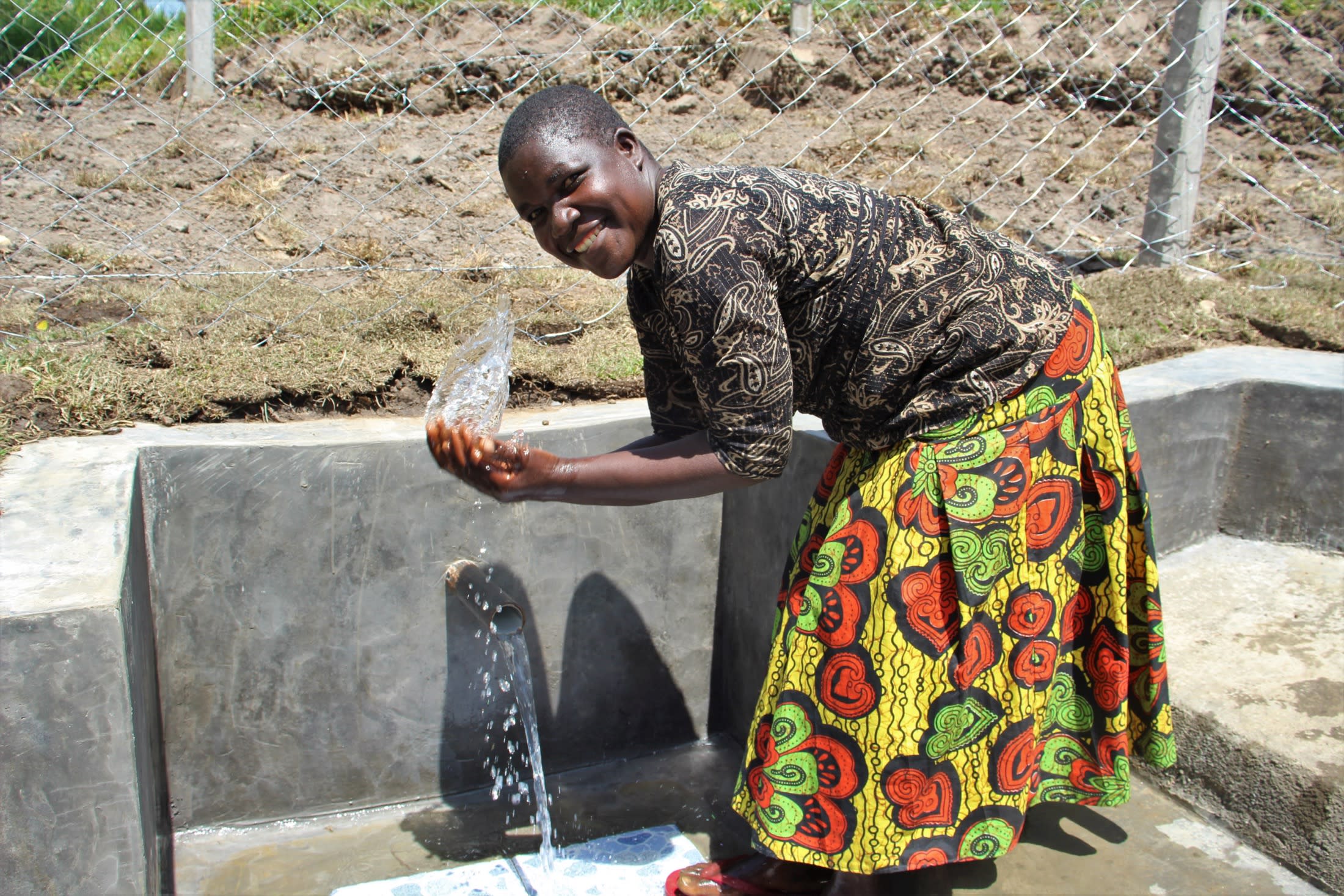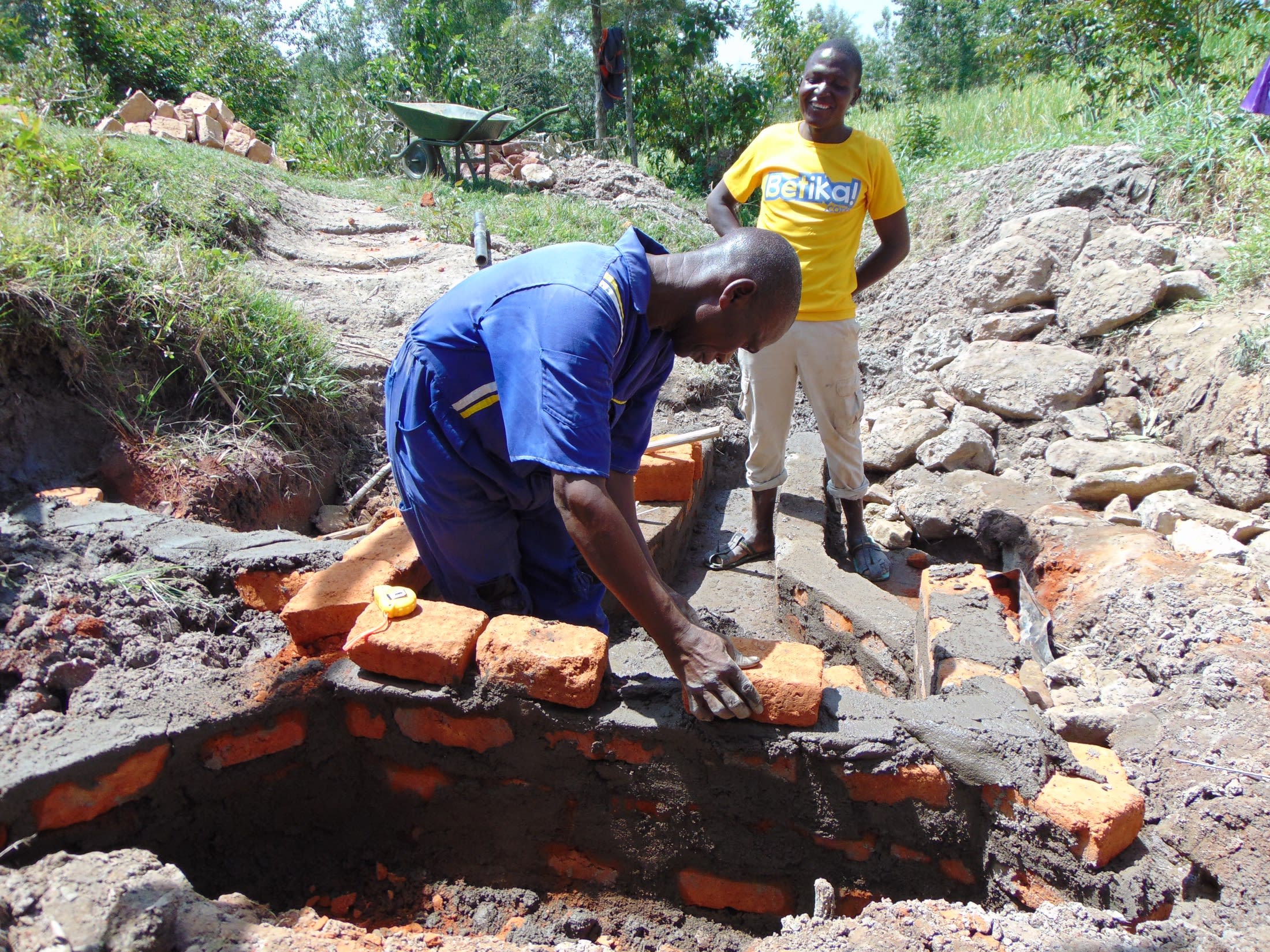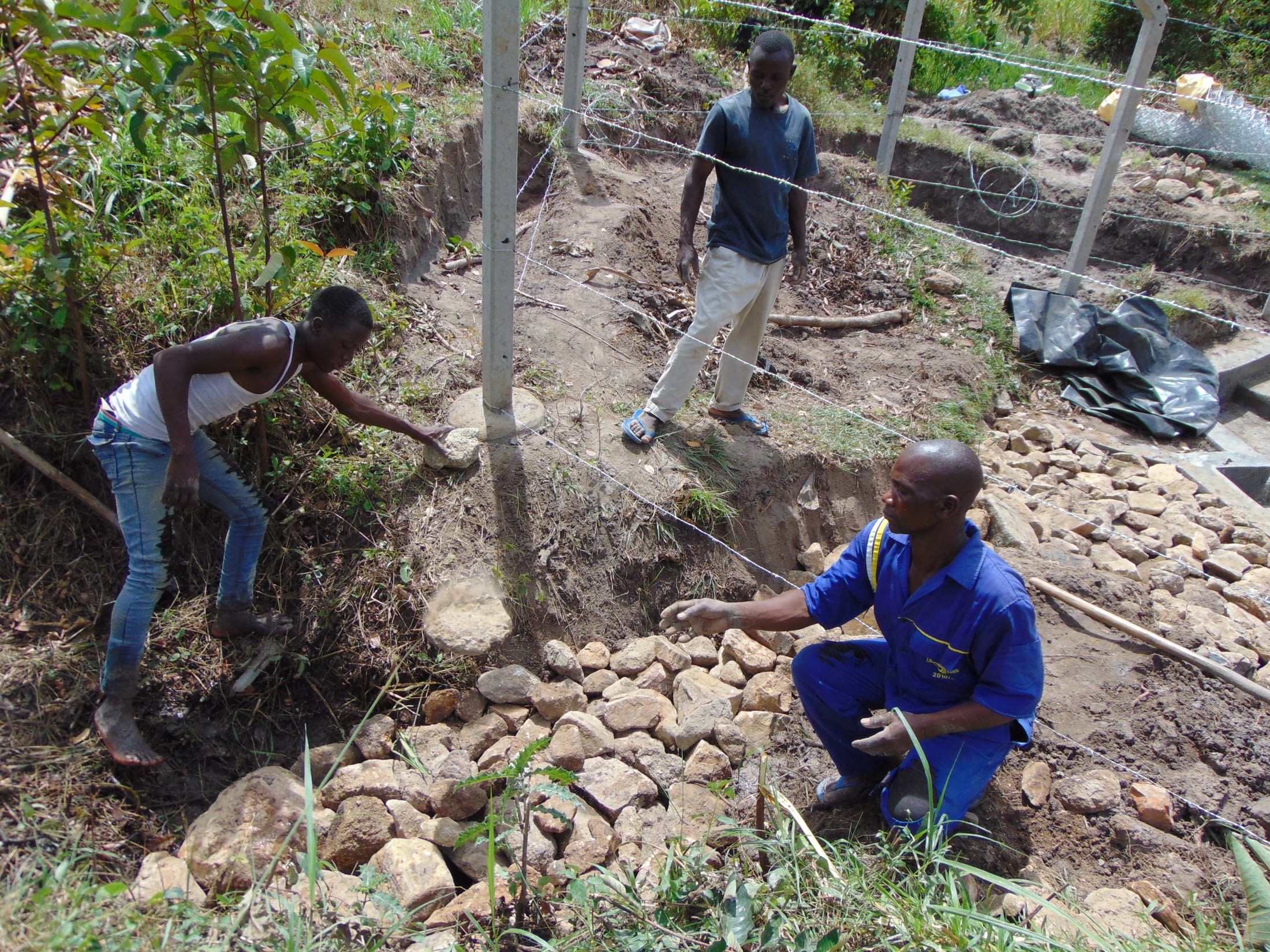Mutumamu Spring within the Litinye community is located in Kakamega, Kenya. The most common livelihood for community members in the village is farming sugarcane, cassava, and beans.
The 210 people of this community draw water from the contaminated and unprotected spring both in the early morning and again in the late evening every day.
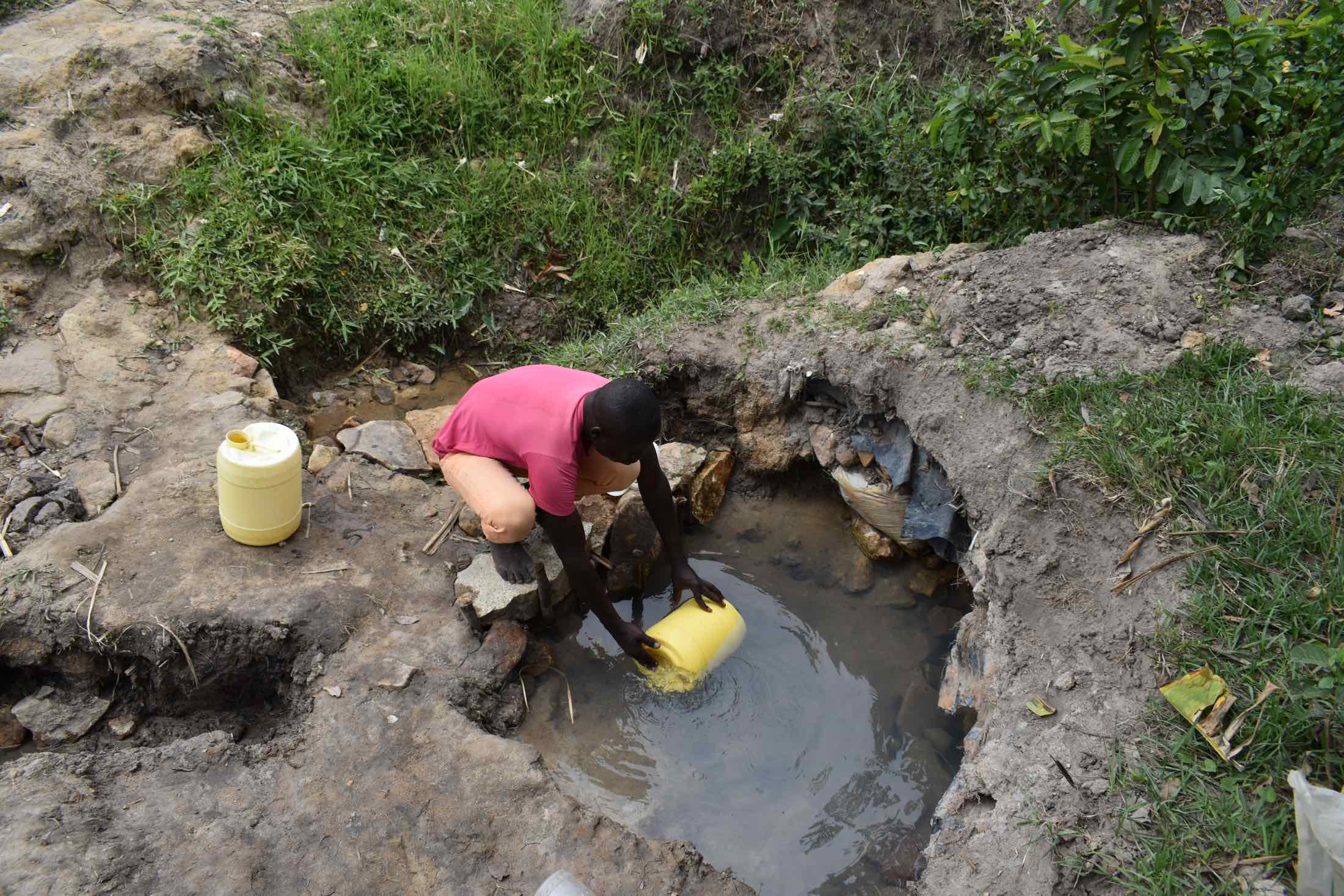
Midday, the spring is often overcrowded since pupils from Kamuchisu Primary School also share this water source. Accessing water is a challenge for students, too.
As stated by 13-year-old Yvonne (shown below), "I am always worried while at school because I need to rush home during lunch break and get water for my grandmother before coming back to school, and at times the spring is overcrowded, and I end up being late at school."
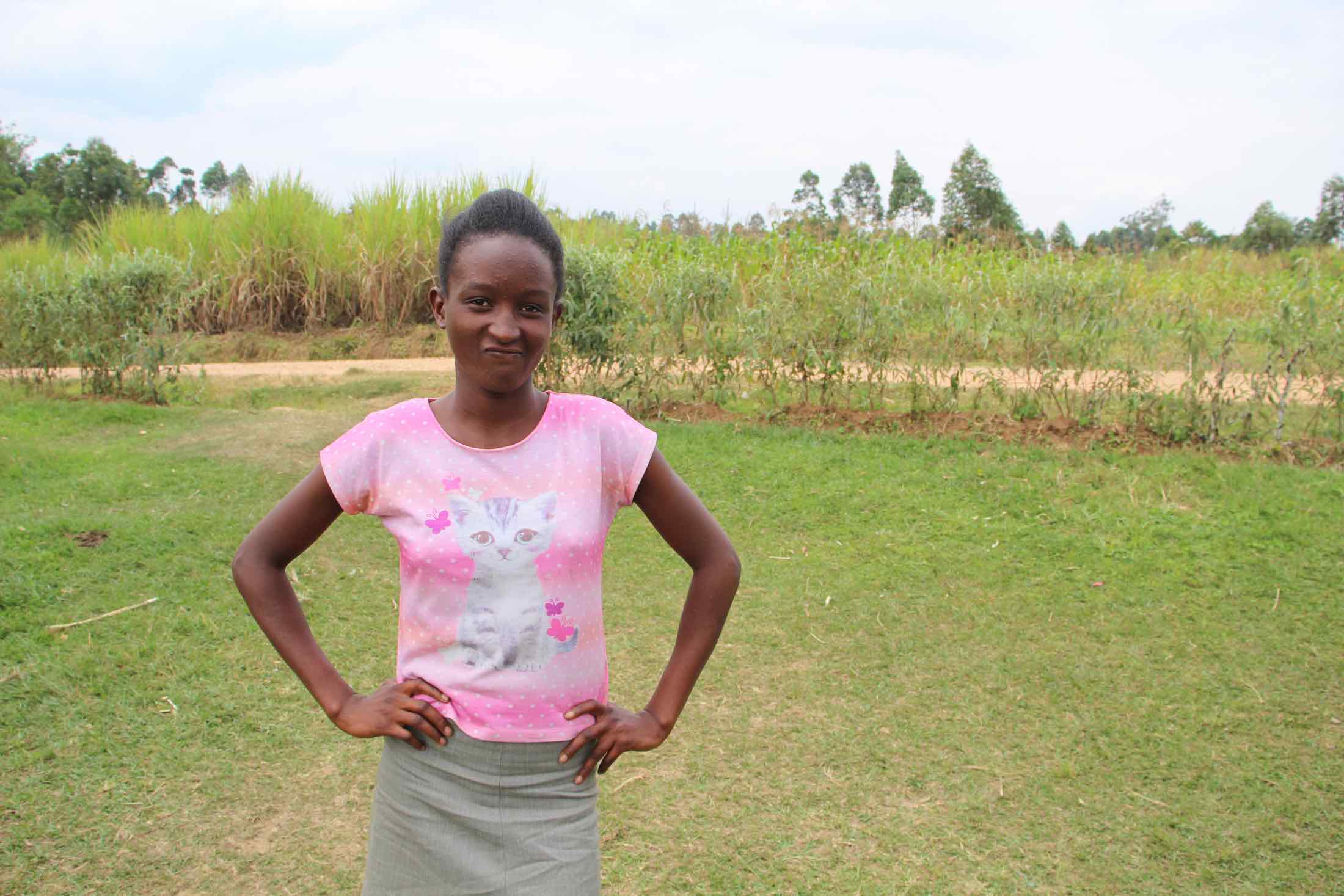
The spring is located on a gradual slope and open to contamination. Outbreaks of waterborne diseases happen regularly, and money meant for daily living expenses is often spent on medical treatment and medications, resulting in poor living standards.
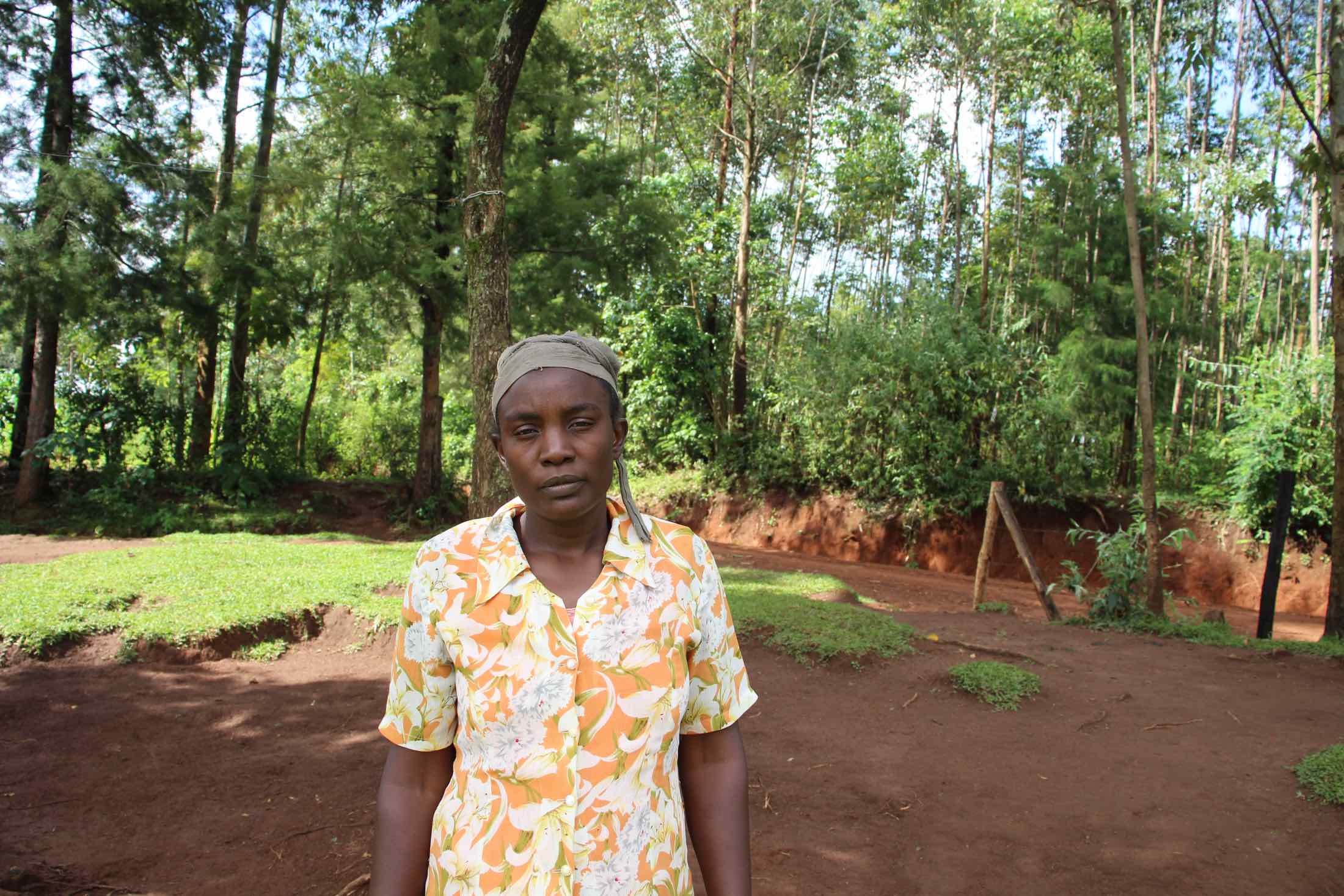
"At my age (66), I need to get up very early in the morning for me to get clean water because, during the day, there is overcrowding at the spring," said Beatrice Agesa (shown above), a local farmer.
What We Can Do:
Spring Protection
Protecting the spring will help provide access to cleaner and safer water and reduce the time people have to spend to fetch it. Construction will keep surface runoff and other contaminants out of the water. With the community’s high involvement in the process, there should be a good sense of responsibility and ownership for the new clean water source.
Fetching water is a task predominantly carried out by women and young girls. Protecting the spring and offering training and support will, therefore, help empower the female members of the community by freeing up more of their time and energy to engage and invest in income-generating activities and their education.
Training on Health, Hygiene, COVID-19, and More
To hold trainings during the pandemic, we work closely with both community leaders and the local government to approve small groups to attend training. We ask community leaders to invite a select yet representative group of people to attend training who will then act as ambassadors to the rest of the community to share what they learn. We also communicate our expectations of physical distancing and wearing masks for all who choose to attend.
The training will focus on improved hygiene, health, and sanitation habits in this community. We will also have a dedicated session on COVID-19 symptoms, transmission routes, and prevention best practices.
With the community’s input, we will identify key leverage points where they can alter their practices at the personal, household, and community levels to affect change. This training will help to ensure participants have the knowledge they need about healthy practices and their importance to make the most of their water point as soon as water is flowing.
Our team of facilitators will use a variety of methods to train community members. Some of these methods include participatory hygiene and sanitation transformation, asset-based community development, group discussions, handouts, and demonstrations at the spring.
One of the most important issues we plan to cover is the handling, storage, and treatment of water. Having a clean water source will be extremely helpful, but it is useless if water gets contaminated by the time it is consumed. We and the community strongly believe that all of these components will work together to improve living standards here, which will help to unlock the potential for these community members to live better, healthier lives.
We will then conduct a small series of follow-up trainings before transitioning to our regularly scheduled support visits throughout the year.
Training will result in the formation of a water user committee, elected by their peers, that will oversee the operations and maintenance of the spring. The committee will enforce proper behavior around the spring and delegate tasks that will help preserve the site, such as building a fence and digging proper drainage channels. The fence will keep out destructive animals and unwanted waste, and the drainage will keep the area’s mosquito population at a minimum.

 Protected Spring
Protected Spring
 Rehabilitation Project
Rehabilitation Project













